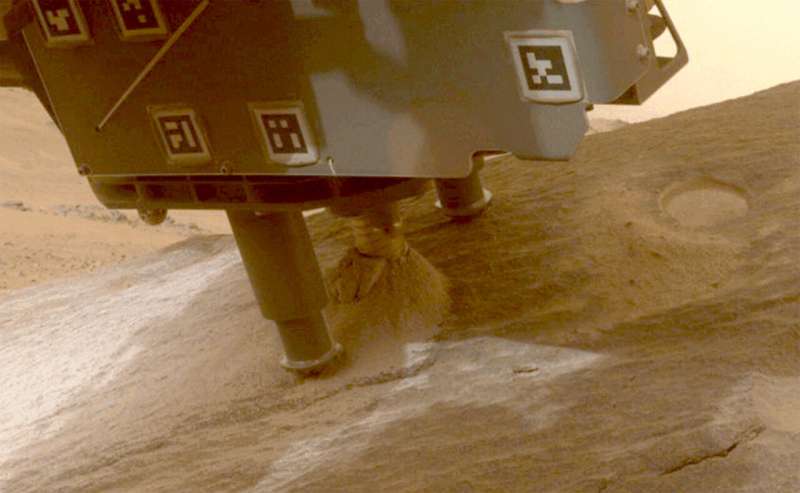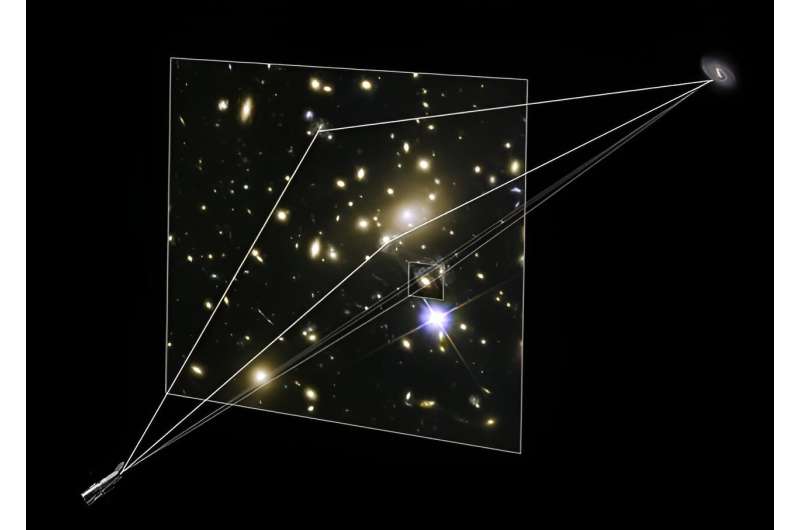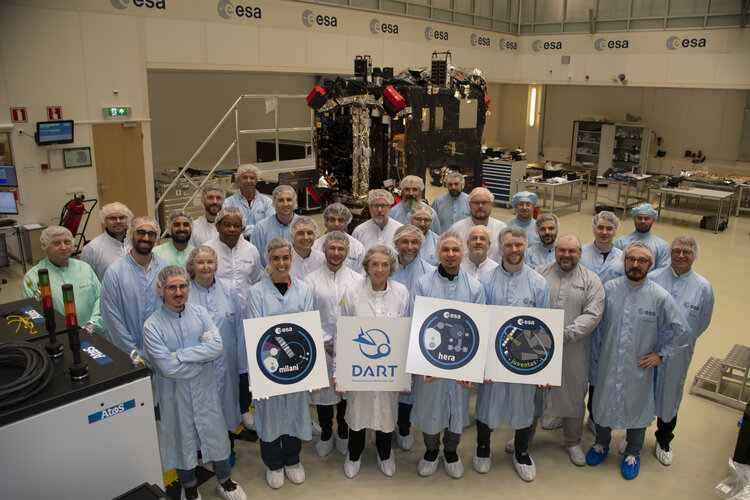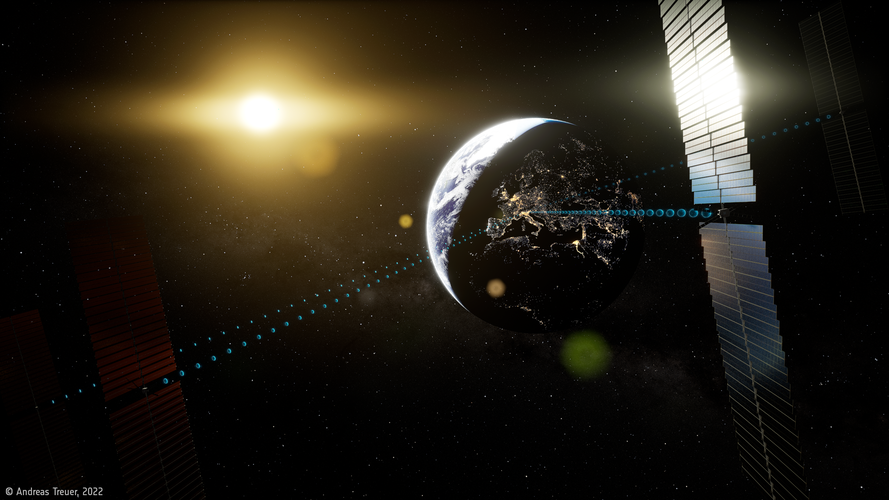NASA is seeking a faster, cheaper way to bring Mars samples to Earth
Tuesday, 16 April 2024 07:03
NASA's plan to bring samples from Mars back to Earth is on hold until there's a faster, cheaper way, space agency officials said Monday.
Sleeping giant surprises Gaia scientists
Tuesday, 16 April 2024 06:00
Wading through the wealth of data from ESA’s Gaia mission, scientists have uncovered a ‘sleeping giant’. A large black hole, with a mass of nearly 33 times the mass of the Sun, was hiding in the constellation Aquila, less than 2000 light-years from Earth. This is the first time a black hole of stellar origin this big has been spotted within the Milky Way. So far, black holes of this type have only been observed in very distant galaxies. The discovery challenges our understanding of how massive stars develop and evolve.
EarthCARE out of the box
Tuesday, 16 April 2024 06:00
After being packed up in Germany, a long voyage to the US and then a month in storage, ESA’s EarthCARE satellite has been carefully lifted out of its transport container so that the team at the launch site can start getting it ready for its big day in May.
NASA to look for new options to carry out Mars Sample Return program
Monday, 15 April 2024 20:42

Smallsat maker Aerospacelab snaps up spacecraft optics specialist
Monday, 15 April 2024 20:09

OpenAI comes to Asia with new office in Tokyo
Monday, 15 April 2024 18:41 ChatGPT creator OpenAI opened a new office in Tokyo on Monday, the first Asian outpost for the groundbreaking tech company as it aims to ramp up its global expansion.
Thanks to the stratospheric success of its generative tools that can create text, images and even video, OpenAI has become a leader in the artificial intelligence revolution and one of the most significant tech companies in the
ChatGPT creator OpenAI opened a new office in Tokyo on Monday, the first Asian outpost for the groundbreaking tech company as it aims to ramp up its global expansion.
Thanks to the stratospheric success of its generative tools that can create text, images and even video, OpenAI has become a leader in the artificial intelligence revolution and one of the most significant tech companies in the A “slow bleed” of funding threatens NASA’s science flagships
Monday, 15 April 2024 17:33

Formation-flying spacecraft could probe the solar system for new physics
Monday, 15 April 2024 16:43
It's an exciting time for the fields of astronomy, astrophysics, and cosmology. Thanks to cutting-edge observatories, instruments, and new techniques, scientists are getting closer to experimentally verifying theories that remain largely untested. These theories address some of the most pressing questions scientists have about the universe and the physical laws governing it—like the nature of gravity, dark matter, and dark energy.
For decades, scientists have postulated that either there is additional physics at work or that our predominant cosmological model needs to be revised.
While the investigation into the existence and nature of dark matter and dark energy is ongoing, there are also attempts to resolve these mysteries with the possible existence of new physics. In a paper, a team of NASA researchers proposed how spacecraft could search for evidence of additional physical within our solar systems.
Space Force eyes faster satellite development with commercial tech
Monday, 15 April 2024 16:06

New upper stage disposal rules will help, not harm, U.S. leadership in space
Monday, 15 April 2024 13:30
Planetary defenders assemble!
Monday, 15 April 2024 13:05 Image:
Planetary defenders assemble!
Image:
Planetary defenders assemble! ESA accelerates the race towards clean energy from space
Monday, 15 April 2024 11:54
ESA accelerates the race towards clean energy from space






